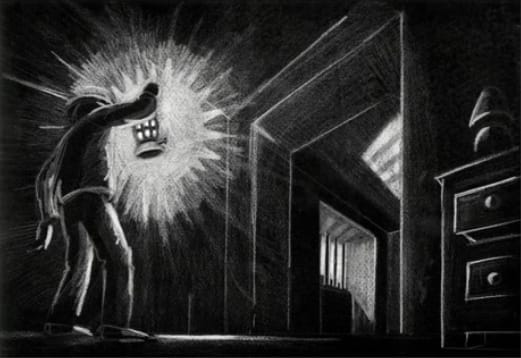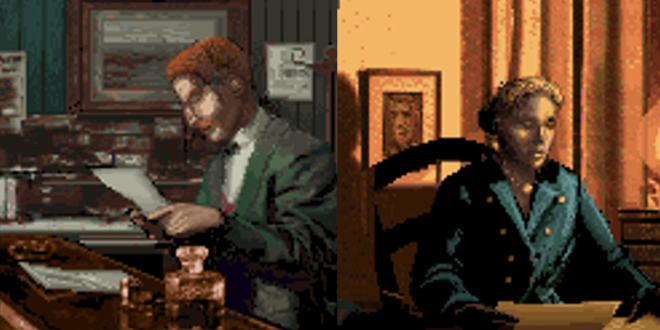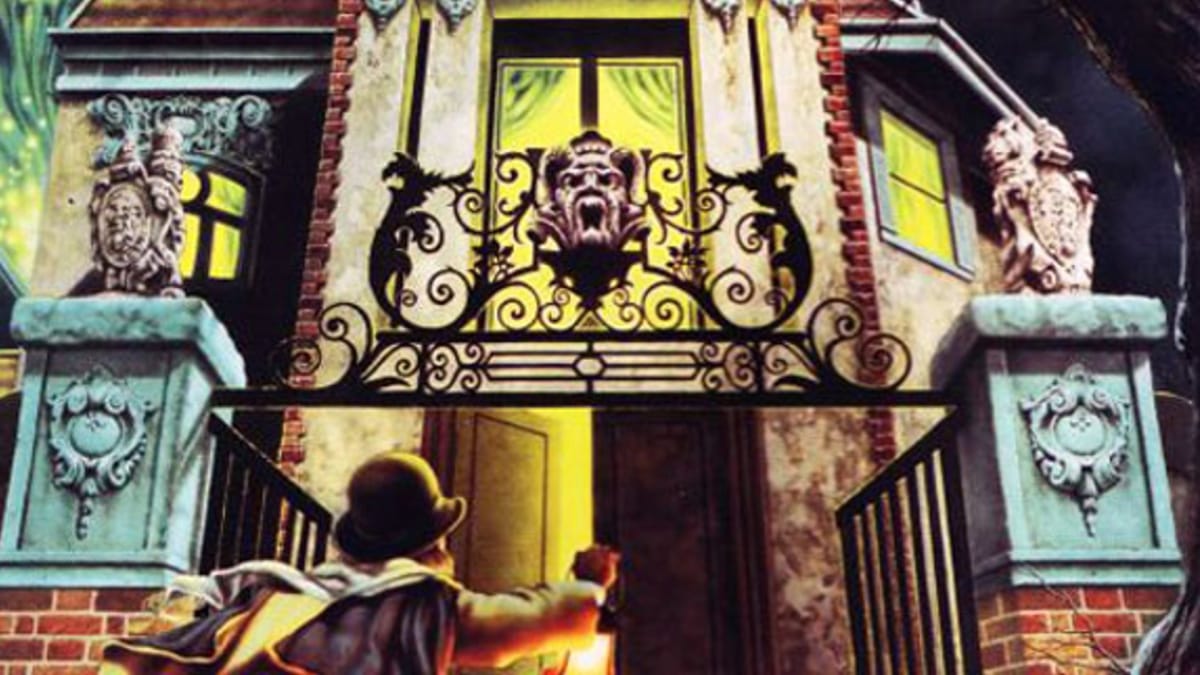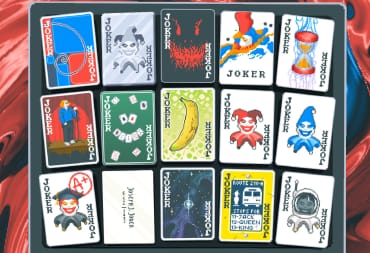When talking about survival horror, it is important to note that the entire genre is very open-ended. Many tend to cite titles such as the original Resident Evil or Silent Hill as being the “purest” examples of what the genre may offer, while modern audiences have used independent games like Slender or Amnesia: The Dark Descent as pure examples of a “revival” of horror-based video games. Yet, horror video games come in many shapes and sizes, and always will.
This should not be shocking, however. After all, any genre and subgenre contains examples of titles deviating from their mechanical roots. F.E.A.R., for example, incorporates first-person shooter mechanics with a horror twist, while one of the most obscure but important games with a horror theme, Sweet Home, is a full-blown role-playing game on the Nintendo Famicom. It seems, however, that this veering of mechanics is often conflated with negative connotations.
Jim Sterling, for example, famously stated in an editorial about survival horror that “Because Resident Evil 4 is seen as an 'evolution,' anything resembling a real survival horror will only be seen as a step back. In short, what many call an evolution was, in fact, a destruction.”
Sterling goes on to state that more modern games called survivor horror, such as Dead Space, are not survival horror at all; but the question I propose is what is real survival horror? In talking about the roots of survival horror, it is important to note perhaps the impetus for their design in the early 1990s. Titles that popularized the genre, such as Resident Evil and Silent Hill, had several major influences to them, some of which are not survival horror in the traditional sense.
In fact, Resident Evil was originally conceived as a sequel to the aforementioned Sweet Home, before it would go through further developments into the title we know today. Not bad for a game no one has ever heard of…
It was not, however, the only source of course, but it is important to note that the influences of design take many forms. Perhaps the most seminal game to be made, the grandfather of the modern survival horror game in terms of that said design, comes from one of the most important video games ever made, and that is Infogrames Alone in the Dark. A unique title back in 1992, Alone in the Dark was a CD-DOS computer game that has been recognized by the Guinness Book of World Records as the “first 3D survival horror game ever made,” a claim that the game rightfully deserves.
The concept of Alone in the Dark has several influential figures attached to it. First was Frédérick Raynal, a programmer at the French-based developer Infogrames. Raynal first became interested in creating 3D programming while working on another Infogrames game, Alpha Waves, also known as Continuum in the U.S. Alpha Waves was a platformer that would contain one of the earliest uses of fully three-dimensional environments. Raynal wanted to create a game with fully 3D characters in a more dynamic environment than Alpha Waves ever could, primarily with human-shaped character models.
The second major figure was the CEO of Infogrames at the time, Bruno Bonnell. Bonnell proposed a game concept to Raynal, where the player would use matches to light up an otherwise completely dark environment. The idea behind this was to constantly use the matches to find your way through a maze, a concept that Raynal felt would work great as a horror-themed game.

Originally titled In the Dark, Raynal spearheaded a small team of artists and developers to set up the basic look and backstory of the game. This team included conceptual artist, and the future wife of Raynal, Yaël Barroz, and art director Didier Chanfray. Raynal came up with the basic setting of the game, a dark manor in the middle of Louisiana sometime during the 1920s.
The game was also going to be based on the Call of Cthulhu mythos, but Infogrames was unable to obtain the rights to the title; supposedly Chaosium, the owners of the Cthulhu mythos and publishers of the role-playing game of the same name, felt that the game was too primitive to fully represent the pen-and-paper game.
For the most part, the game was built from the ground up in the same vein as most adventure titles of the era, with a sophisticated set of command keys, an inventory, and an emphasis on exploring and trial and error puzzle solving. The major difference between Alone in the Dark, as the game would eventually be retitled to, and other adventure titles would be the use of 3D animation. While a technical marvel when the game itself was released in 1992, it was not without several drawbacks that would have to be baked into the title's final design.
Unlike Alpha Waves, Alone in the Dark would have static backgrounds and fixed camera angles, primarily to compensate for the lack of fully developed 3D technology and rendering tools in the early 1990s. Due to this, the fixed camera angles became a major feature of the game, providing a more cinematic experience due to the numerous camera angles present. The original plan was to have Alone in the Dark with scanned photos of an actual, 1920s mansion, but the idea was scrapped due to technical limitations.
Character models and objects would still be rendered in 3D by using interpolated animation, meaning the game relied on the computer itself to render frames of animation for movement and combat. Raynal recalls in an interview with Gamasutra: “You could, like an articulated puppet, put all the positions of the body. I wanted to have this, but in the early 90s, PCs were slow but were evolving very very quickly.” It turned out to be a wise move, as most PCs had different optimizations and speeds, something Raynal was well aware of when it came to animation for the game. “I decided to have this system to be able to adapt itself to the speed of the computer,” he recalls.
“You can put all the time you want between the frames.” Due to the interpolated technique, Raynal only had three key frames of animation per character, which drastically reduced the animation process and made the game run faster in most PC setups.

Because Alone in the Dark was designed to be more akin to an adventure game with a horror theme, Raynal wanted to enhance the experience so that players would get a sense of fear for the events on-screen. One such solution was how to handle the inventory system; limiting the players' carrying capacity based on weight provided a simple sense of helplessness when getting involved in fights with the game's numerous monsters. Another technique was how Raynal approached player death; having unavoidable traps, or being attacked while in the inventory screen were just simple indicators to the player to be cautious, as anything can happen when you least expect it.
These design elements allowed for Alone in the Dark to be a scary experience for the player, despite the very basic-looking graphics on screen. As Raynal puts it, “In an adventure game, you walk 80% of the time. So, if you want to put big pressure on the player, just scare him with what he does all the time- just walking.” In many ways, this is the true strength of Alone in the Dark - the sense of the unknown, of not being sure where you are going will lead to a new clue or a room filled with monsters to fight.
Production ran smoothly for the game, but by the tail end of the development, Raynal and his team were burnt out through bug testing. Raynal himself was not a fan of the final product, believing there were too many shortcomings and compromises in making the game feel real, but had no choice due to technical limitations at the time. Another problem after the launch of the game would be Infogrames CEO Bruno Bonnell. When Alone in the Dark proved to be popular, Bonnell and Raynal clashed over the nature of the game's sequel, leading Raynal and most of the team working on the game to leave Infogrames and formulate their own company, Adeline Software International.
As for Alone in the Dark, the game would spawn two direct sequels, and reboot, and several iterations of the series throughout the next twenty years. The most recent game in the series, a cooperative online multiplayer game titled Alone in the Dark: Illumination, was released in June of this year, making Alone in the Dark the longest-running horror franchise in gaming history.
Perhaps the most important legacy, however, is how Alone in the Dark would directly influence the design and visual treatment of horror-themed games. For over a decade after its release, the growing “survival horror” genre took its visual and mechanical cues from Alone in the Dark: the limited inventory, unkillable enemies, frightening moments that come out of nowhere, and of course, the static camera angles offering a cinematic framework. Many of these tropes are now synonymous with the survival horror genre, for good or for ill.
When looking back, much of what we define to be survival horror was done because of technical limitations in the end. For the genre to truly survive, it must adapt, much like any other genre in video games. Pushing the envelope of design, experimenting with different mechanics or thematic elements, even incorporating sound effects or music to heighten the tension of a given scene—all of this is still done today with horror games. The horror has gotten more sophisticated and overt in its design, which makes the argument that survival horror is a misnomer in some respects.
In truth, survival horror is simply changing with the times like all genres in gaming. Holding onto what worked in 1995 will not necessarily work in 2015, a fact that most game developers and publishers realize, as we see a shift in how survival horror games are portrayed.
That doesn’t mean, however, that we should not honor games like Alone in the Dark. Knowing the roots of video games is just as important as playing them; so as primitive as the gameplay or graphics may be by today's standards, it provided the blueprint for games going forward, combining changing technology with a desire to make something truly scary. This is a testament to how much of a game-changer Alone in the Dark has become in gaming history.
This post was originally published in 2015 as a part of our Game Changers series. It's been republished to have better formatting.
Have a tip, or want to point out something we missed? Leave a Comment or e-mail us at tips@techraptor.net













